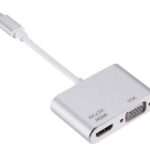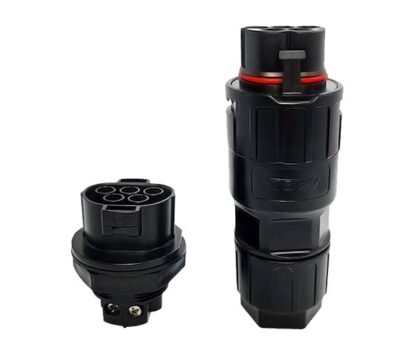USB connectors are an integral part of modern technology, allowing us to easily connect and exchange data between devices. There are several types of USB connectors, including Micro A and Micro B.
Definition of USB Micro A and B connectors
A USB connector is a standardized interface that allows devices to be connected to a computer or other host. The physical characteristics of Micro A and Micro B connectors are slightly different, with Micro A being slightly larger than Micro B. However, the most important difference between the two is the direction in which they are inserted into a device.
Micro A connectors are typically found on devices that act as hosts, such as smartphones and tablets. These connectors are designed to be inserted into a port on the device, allowing it to charge or transfer data with another device. On the other hand, Micro B connectors are found on devices that act as peripherals, such as cameras and external hard drives. These connectors are designed to be inserted into a port on the host device, allowing the peripheral to connect and exchange data with the host.
Differences between USB Micro A and B connectors
The main difference between Micro A and Micro B connectors is the direction in which they are inserted into a device. Micro A connectors are inserted into a port on the device, while Micro B connectors are inserted into a port on the host. This distinction is important because it determines the role of each device in the connection.
In terms of charging and data transfer, Micro A connectors are generally used to charge a device or transfer data from the device to the host. Micro B connectors, on the other hand, are used to transfer data from the host to the device or to charge the device when it is connected to the host.
Here are some additional points that could be included in a section on the differences between USB Micro A and B connectors:
- Compatibility: Micro A connectors are generally not compatible with Micro B ports, and vice versa. This means that it is important to pay attention to the type of connector your device uses in order to ensure that it can connect with other devices.
- Connector orientation: Another key difference between Micro A and Micro B connectors is their orientation. Micro A connectors are generally oriented horizontally, while Micro B connectors are oriented vertically. This can make it easier to distinguish between the two when trying to connect a device.
- Power delivery: Micro A connectors are also capable of delivering more power than Micro B connectors. This means that devices with Micro A connectors can be used to charge other devices more quickly, provided that the host device is capable of delivering a sufficient amount of power.
- Data transfer speeds: In general, Micro B connectors are capable of faster data transfer speeds than Micro A connectors. This is because Micro B connectors have more pins and are able to transmit data over multiple channels, whereas Micro A connectors only have a single channel for data transfer.
- Reverse compatibility: Some newer devices may be equipped with both Micro A and Micro B connectors, allowing them to connect to a wider range of devices. However, this is not always the case, so it is important to check the connector type before attempting to connect two devices.
Examples of devices that use USB Micro A and B connectors
As mentioned earlier, Micro A connectors are commonly found on devices that act as hosts, such as smartphones and tablets. These devices use Micro A connectors to charge and transfer data with other devices.
On the other hand, Micro B connectors are found on devices that act as peripherals, such as cameras and external hard drives. These devices use Micro B connectors to connect to a host and transfer data or charge their batteries.
Conclusion
In conclusion, it is important to understand the difference between USB Micro A and B connectors in order to ensure compatibility and proper functioning between devices. Micro A connectors are found on devices that act as hosts, while Micro B connectors are found on devices that act as peripherals. By paying attention to the type of connector your devices use, you can ensure a smooth and efficient connection.



